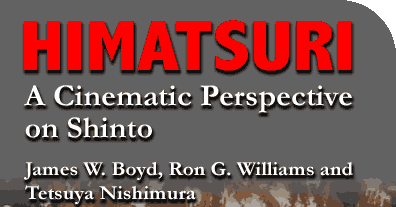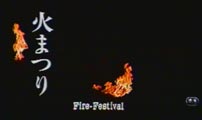|
|
|
 |
|||
|
|
 |
 |
 |
||
|
|
|||||
 |
|||||
|
|
|||||
| |
|
 |
 |
|||||||||
| |
|
|
|
|
|
|
|
|
|
|||
| |
||||||||||||
![]()
Introduction
Since Shinto traditionally emphasizes right relation with Great Nature, we might expect contemporary Shinto practice to be a force for the protection of the environment. But several articles in the recent book Japanese Images of Nature,1 argue that neither Buddhism nor Shinto have been effective guardians of the natural environment. This poses the question: does the Shinto tradition have anything to offer to the international environmental debate? As prolegomena to the discussion of these complex issues, we offer an analysis of the film Himatsuri (Fire Festival). Film analysis may seem a strange avenue to the investigation of a religious tradition, but we believe that the arts can provide a sui generis means of exploration and knowledge, and we have chosen a film which is about the connection between Shinto practice and environmental issues: Yanagimachi’s Himatsuri, released in 1985.2 The analysis of it that follows gives us the opportunity to explore the intersection between cinema, the Shinto tradition, and topics in ritual studies.
|
|
| 1 Ed. by Pamela J. Asquith and Arne Kalland (Nordic Institute of Asian Studies). Richmond, Surrey: Curzon Press, 1997. |
| 2 It subsequently received world-wide exposure at film festivals and some art houses and is now available in the U.S. on videotape. |
 |
Opening
credits to Yanagimachi's film Himatsuri (Fire Festival) |